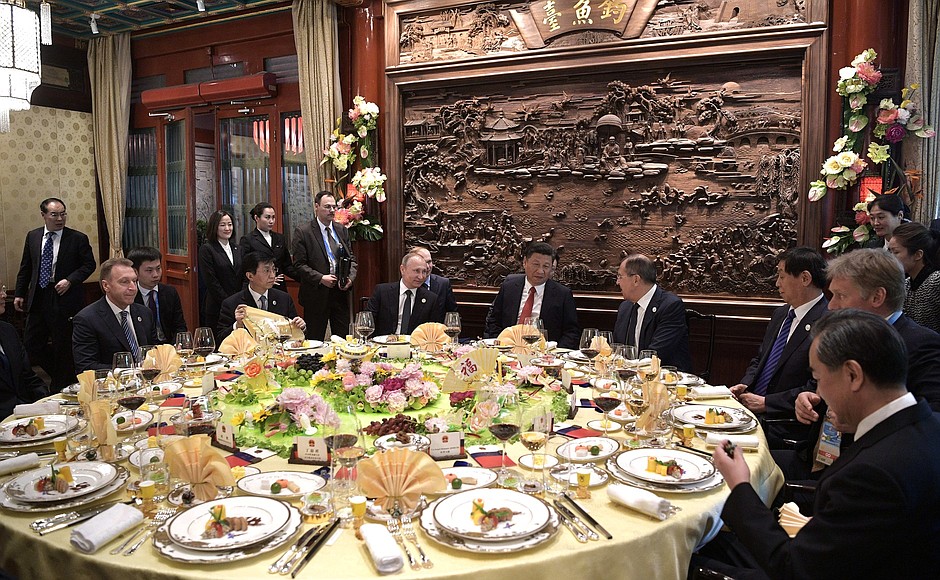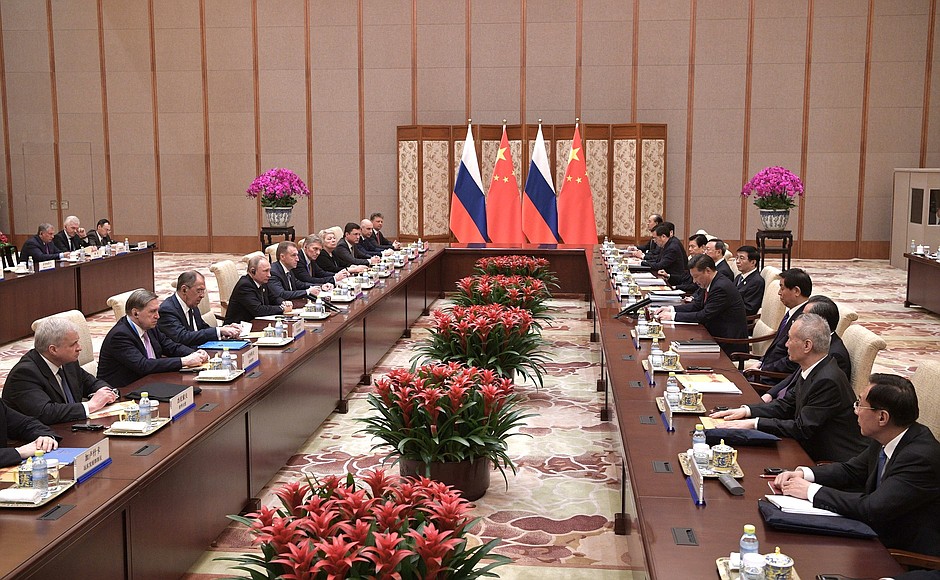Beijing held the last day of the One Belt One Road international economic forum, which was attended by Russian President along with other leaders. Another Russian-Chinese summit was also held there.
Commenting on the results of the Beijing meetings, the President of the Russian Council on Foreign Affairs, the former Russian Minister of Foreign Affairs (1998-2004), Igor Ivanov, expressed the opinion that the idea of forming a large Eurasian space is consistently being implemented: "There is a political will of a large number of states to act in concert towards the set goal. In Beijing, it was decided to hold a regular forum in 2019. It is of fundamental importance that the emerging Eurasian partnership is not a closed one. It implies not only the addition of the potentials of such integration forums as the Eurasian Economic Union, the One Belt One Road, the SCO and the ASEAN, but does not close the door for participation of other states, including the European Union. A key role in the implementation of this large-scale cooperation project in the Eurasian region belongs to China and Russia".

On May 29-30, the Russian Council on Foreign Affairs will hold in Moscow the third international conference called 'Russia-China: Towards a New Quality of Bilateral Relations' in cooperation with the Russian-Chinese Friendship Society, which is celebrating its 60th anniversary this year. The agenda of the conference includes the issue of the unification of the Eurasian Economic Union with the projects of the Silk Road.
Igor Ivanov asserts that no one intends to encroach on the territorial integrity or national interests of any states in the implementation of transport or other routes: "The Russian-Chinese partnership is not directed against any third country. We want to demonstrate that we are developing the culture of political relations that could be acceptable to any other states. These principles should be the international norm. "

According to the Director of the Institute of Far Eastern Studies of the Russian Academy of Sciences, Sergey Luzyanin, the One Belt One Road project will contribute to strengthening stability in Eurasia and eventually may become an additional joint security institution in the region. It is about the advantages that some countries have, and others don't: "Economic power, economic resources, like connecting vessels, can give impetus to the development of weak, medium-developed countries within the framework of this initiative. There is a financial and economic part, there is an infrastructural part, there is a rather complicated integration and trade part. This project is beneficial to everyone, first of all, to Russia and China. And within this strategic partnership format, some flexibility is possible. It is clear that companies will not directly refuse profit, but some compromises, mutual exchanges with partial loss in one sphere and the acquisition of some dividends in another are possible".

The expert of the Russian Council on International Affairs, Yaroslav Lisovolik believes that the more developed the infrastructure within the One Belt One Road project is, the more opportunities Eurasian countries have to participate in the processes of growing integration between Asia and Europe. In particular, it is about the mechanism of interaction between development banks that are involved in the process of financing projects under the One Belt One Road. "At the forum in Beijing, the discussed the topic of the BRICS countries interaction, the expansion of BRICS in the BRICS Plus format, based on the interaction of regional integration associations, in which the BRICS countries play a leading role. The system based on BRICS Plus could contribute to the globalization ofthe One Belt One Road project. Similar projects in Eurasia are conducted on other continents as well with the participation of development banks of those countries that are located either on the African continent or in South America," Lisovolik said.
According to him, not only the transport infrastructure of Eurasia is changing within the project, but also its financial architecture: "From the point of view of interaction between development banks and currencies used in the process of mutual settlements between the countries in the context of the implementation of these mega-projects, it is possible to increase the calculation factor in national currencies. This factor can contribute to the de-dollarization of the Eurasian countries, reducing dependence on the US dollar and increasing the role of emerging market currencies . This includes the possibility of creating new reserve currencies, strengthening the role of the yuan as a reserve currency in international settlements, the creation of new financial centers. This is an opportunity to influence the financial architecture of Eurasia. "






